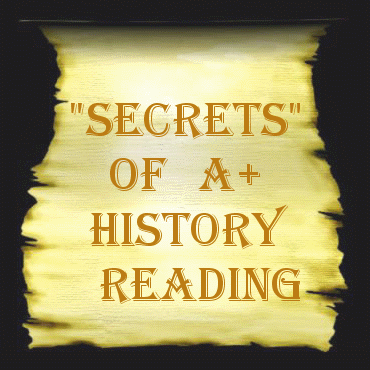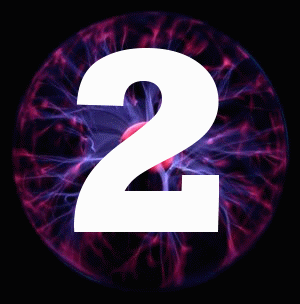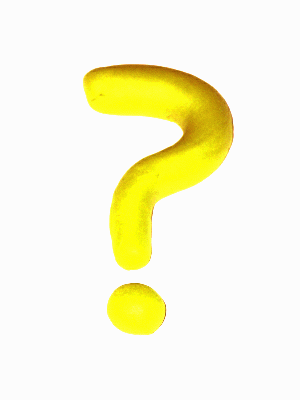
HOW TO READ HISTORY

History is a story, and you should read it as a story, but it is also a kind of ongoing conversation among scholars and historians about the past . The discussion centers on why and
how an event took place and what the consequences of that event may have been.
When you read, write or study history you are actually being invited to take
part in that ongoing scholarly discussion.
HINT: In reading history, always look for
areas of disagreement. Those unsettled areas are the ones your professor is
most likely to want to discuss in class. They are the ones where you yourself
can most readily make a contribution as a beginning scholar.
Never just read history.
Always read in order to question and respond.
Ask: Why did this happen? What if this person had never been born, or
what if this event had never happened (or happened differently)? What if history had taken a different track?
·What
never to do: Never just memorize names, dates, facts and
vocabulary, and then “barf” them back undigested onto
the exam sheet. That’s disgusting!
 There are two very
different kinds of history reading:
There are two very
different kinds of history reading:
A.
A. Primary sources: first-hand sources from the time of the
event you are interested in; and
B.
B. Secondary sources:
stories about or interpretations of an event written later, based on primary
sources. A textbook or history book is a
secondary source

A. How to read a primary
source:
When
you read a primary source you are doing the most important job of the
historian. There is no better way to understand events in the past than by
examining primary sources--whether journals, newspaper articles, letters, court
case records, novels, artworks, music or autobiographies--that people from that
period left behind.
Each
historian, including you, interprets a document differently. Remember that
there is no one right interpretation, but
there are definitely wrong
interpretations. If you do not do a careful and thorough job, there is
always a danger that you could arrive at
a wrong interpretation.
First, carefully look at the document itself, and then
consider the era from which it comes.
·
Look at the physical nature of your
source. This is
particularly important and powerful if you are dealing with an original source (i.e.,
an actual old letter, rather than a later published version of the same
letter). What can you learn from the form of the source? (Was it written on
fancy paper in elegant handwriting, or on scrap-paper, scribbled in pencil?)
What does this tell you?
·
Ask
yourself: what was the author's message,
argument or purpose?
·
What do you know about the author: Race, sex, class, occupation, religion,
age, region or nationality, political beliefs? How does this affect the nature
of the document?
·
Who
was the original intended audience of the document? Was this source meant for
one person's eyes, or for the general public?
·
Does
it tell you about the beliefs/actions of the elite, or those of
"ordinary" people (who throughout history are always the majority)? Who
did the document serve?
·
Does
the author see the big picture of an event, or only his or her tiny part of it?
·
What
are the limitations of this type of source? Whom does the author ignore and
what important things does she choose NOT to talk about?
·
How
does this source agree or disagree with other sources or historians?

B.
How to read a secondary source:
First,
find
the author's theme and
thesis:
·
The
theme is what the book or article is
about; all writing has a theme.
·
The
thesis is what the author attempts to
prove. Theses are usually found in the introduction and the conclusion.
So, these are the parts you read first.
 Reading
a history book: Never
just read each page one by one, from the first page to the end. Instead, start
by rapidly reading through the preface, introduction, and conclusion. Then,
look over the table of contents, bibliography, and footnotes. Glance over each
chapter before reading it more carefully. Generally you will find that details,
arguments, examples, dates and names stick with you much more easily when you
understand their place in the story that the author is telling.
You ought to be able to read and evaluate an
ordinary history book in a couple of hours. Give yourself, say, 45 minutes
to look over a history book, and then write a page or two of notes describing
the main points of the book. However, this
won't work with a textbook, which is too big and compressed and will
probably have to be read more slowly--but you could do it with each chapter of
a textbook.
Reading
a history book: Never
just read each page one by one, from the first page to the end. Instead, start
by rapidly reading through the preface, introduction, and conclusion. Then,
look over the table of contents, bibliography, and footnotes. Glance over each
chapter before reading it more carefully. Generally you will find that details,
arguments, examples, dates and names stick with you much more easily when you
understand their place in the story that the author is telling.
You ought to be able to read and evaluate an
ordinary history book in a couple of hours. Give yourself, say, 45 minutes
to look over a history book, and then write a page or two of notes describing
the main points of the book. However, this
won't work with a textbook, which is too big and compressed and will
probably have to be read more slowly--but you could do it with each chapter of
a textbook.
Critical evaluation:
As you read, ask questions! Try to come
to some conclusions as to the value of the book and the interpretations it offers. Don’t waste time trying to dispute the
evidence—that generally requires you to be an expert historian—instead, try to
see whether or not the evidence actually supports the conclusions the author
draws.
·
Are
the author's examples ordinary or are they just rare, strange or unique
exceptions?
·
Does
she offer enough examples to illustrate the case thoroughly?
·
Does
her view agree with views you have read about before, or with your personal
experience?
·
Does
the author interpret a bit of evidence in one way, but you can see that it
might logically be interpreted equally well in another way?
·
Does
she acknowledge arguments against her own thesis and convincingly explain why
they are inadequate or incorrect? Or
does she simply ignore opposing evidence or arguments?
As you read, always keep in
mind:
·
Large
numbers of so-called "historical facts" are actually opinions, generalizations
or interpretations that have attained the status of "facts" just because
they have become so well established that no one argues about them any more.
·
Historians,
like everyone else, select their facts. They pick and choose from an infinite amount
of information about everything that ever happened in the past. Their choice of
facts is shaped by their interests, their own beliefs, their background, their
training, and the questions they ask.
 As
a beginning scholar, whether or not you like or enjoy reading the book is usually
the least important factor in your reading and responses.
As
a beginning scholar, whether or not you like or enjoy reading the book is usually
the least important factor in your reading and responses.
“Critical”
reading does not necessarily mean “criticizing,” nit-picking or
disagreeing with the author's thesis or evidence. But always be ready to
explain
why you agree or disagree.
Always ask yourself:
·
What
seem to be the author's assumptions and values? Does she seem to subscribe to
some religious, political or ideological system such as Christianity,
Conservatism or Marxism? (Be aware of where the source is coming from, but don't
let that prejudice you against the writer!)
·
How
does the work relate to other reading in the course, or to the other books
you've read in your life? How does it relate to your own personal beliefs,
ideology, faith or experience?
·
If
the author is correct, so what? Does she change our view of the past
or understanding of
the present? Does the book pass the “who
cares?” test? If so, why? If not, why not?
OW 5/07
For classroom
use only! Adapted from
Carlton College History Website.
Thanks are due to Kirk Jeffrey, Molly Ladd-Taylor, Annette
Igra, Rachel Seidman, and others
http://apps.carleton.edu/curricular/history/study/read/readinghistory/
and http://apps.carleton.edu/curricular/history/study/primary/
